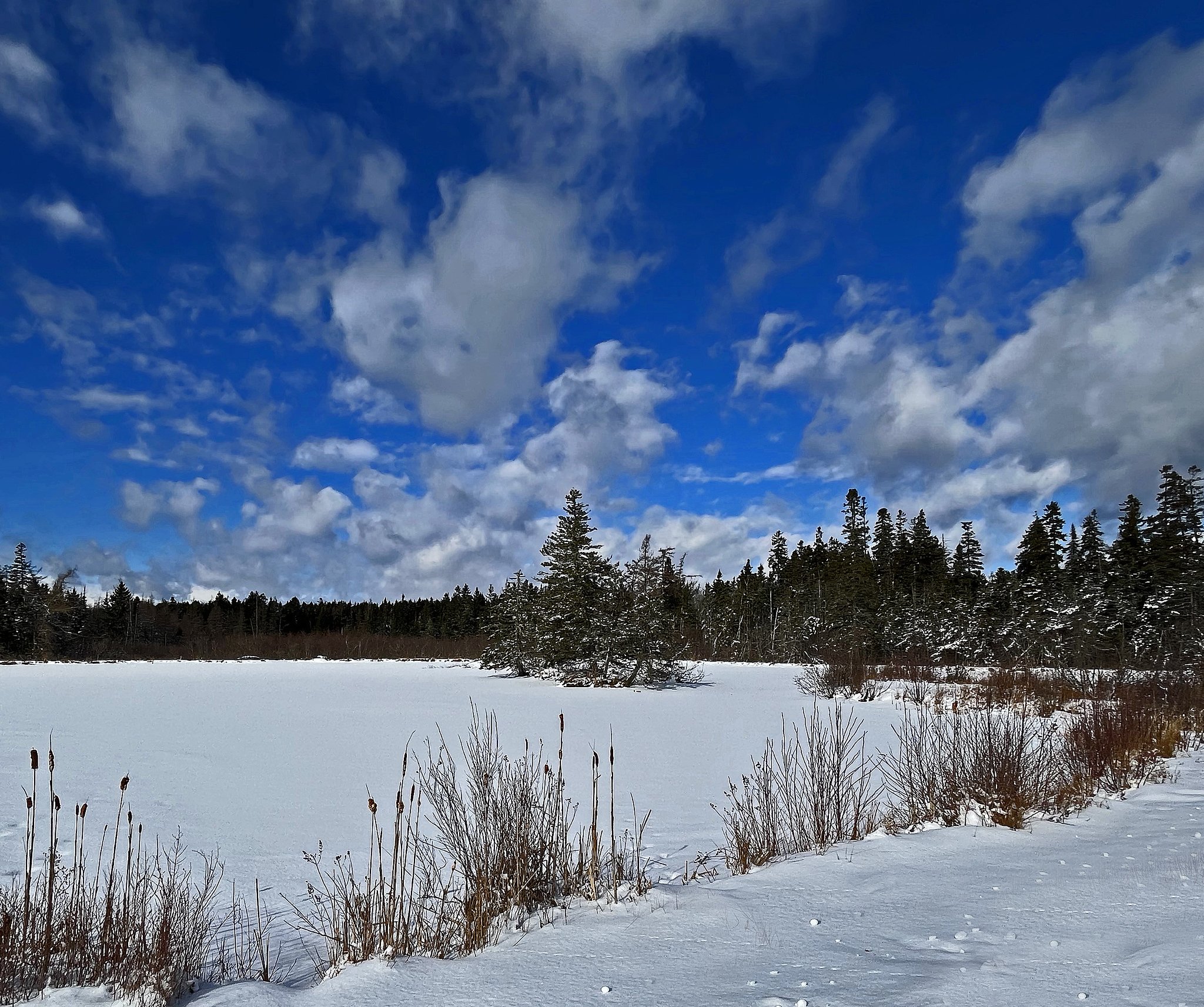February, our shortest month, generally is considered to be the last month of winter. But, up here, you never know. Nonetheless, February is named after the Roman festival of Februa, which was a time of cleansing. In that sense, this February lived up to its name.
It was filled with polite, purifying snows followed by bright sunlight, with a few gray. rainy, and bitter cold days tossed in so that we don’t get spoiled. Although a short month, there were plenty of sights worthy of sending “Wish You Were Here” postcards about.
As usual, we begin with our four iconic sights on the Blue Hill Peninsula, which includes the towns of Brooklin and Blue Hill: The mountains of Mount Desert Island, as seen from Brooklin: the summer house on Harbor Island in Brooklin’s Naskeag Harbor; the near-mountain called Blue Hill, as seen from across Blue Hill Bay in the Town of Blue Hill, and the red boathouse in Blue Hill Bay’s Conary Cove:
February’s plentiful snow flurries often were visitations by the tiniest of flakes that floated this way and that before collecting in crowds on trees and on the ground. When followed by bright sunlight, the effect could be dazzling and tempting for those who like to be creative.
The month’s freezes and thaws and occasional high winds had a dynamic effect on our many bays, ponds, and streams.
For the ducks that depend on those waters, the calms were wonderful, but the freezes caused fruitless treks across ice looking for a swimmable space to dive for food. Ducks weren’t the only swimmers this month; a group in Brooklin took a “cold dip” in Naskeag Harbor to promote donations to Finding Our Voices, an organization that aids survivors of domestic abuse.
We did a lot more driving than swimming this February, thanks to our tradition of fast and frequent plowing. Country roads and lanes can be very attractive framed in snow.
On the waterfront, February is a time for fishing for scallops for some vessels and for resting until summer for others. The scallopers are lobster boats that are fitted out with masts, booms, and shelling huts. Many of the summer vessels are fitted out as mummies in shrink-wrap. Hardy lobster traps don’t need to be fitted out in anything while they wait for summer.
February’s purifications were well applied to rural structures, from sheds to barns and to dwellings, lighthouses, and chapels.
If you go into some of those dwellings, you’ll find tropical flowers in full bloom during February, including hibiscus flowers that seem to be sherbet volcanoes.
Finally, we come to February’s moon. Some Native Americans called it the Snow Moon for obvious reasons; others called it the Hunger Moon because snow made it difficult to hunt. We’ll just call it magnificent this year because it rose full during and above a snow-storm-in-the-making and was fascinating as it passed through its other phases.
(All images in this post were taken in Down East Maine during February 2025.)























































